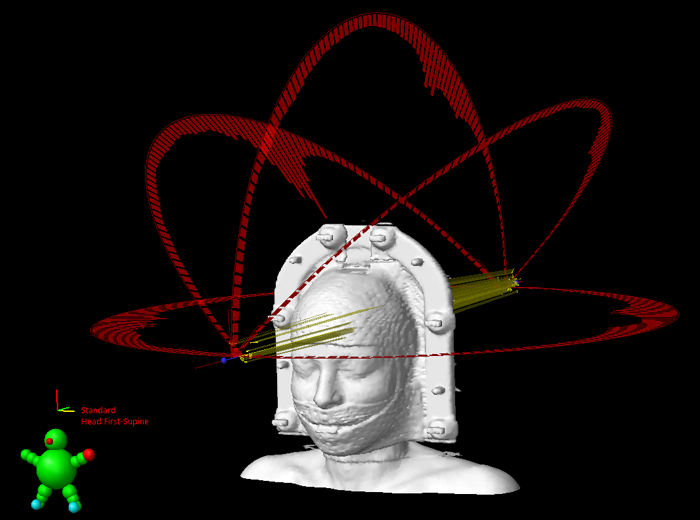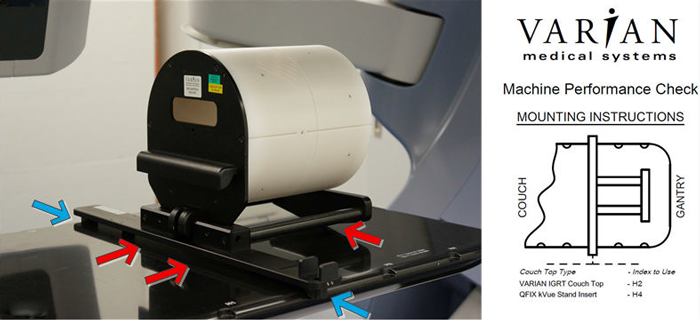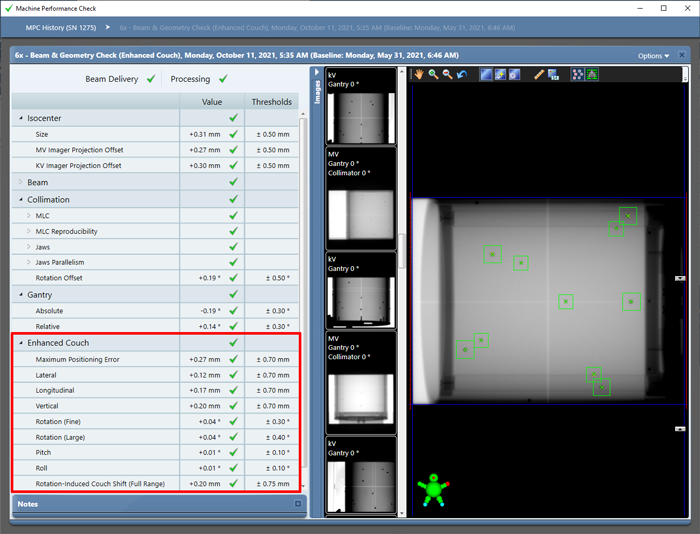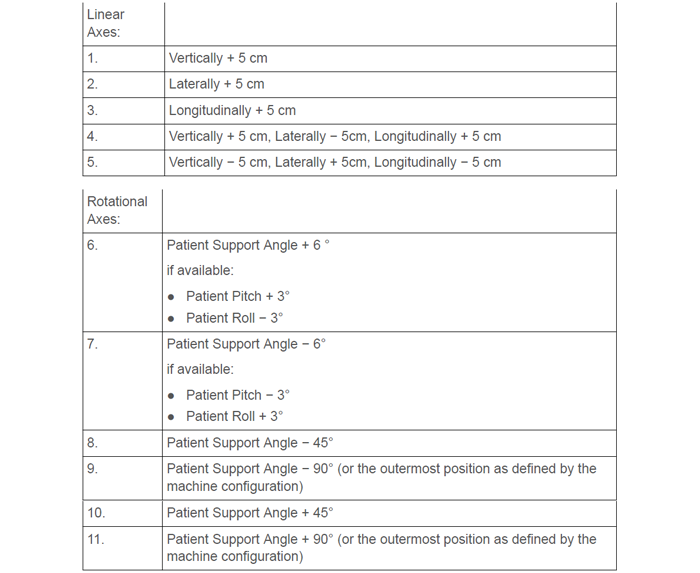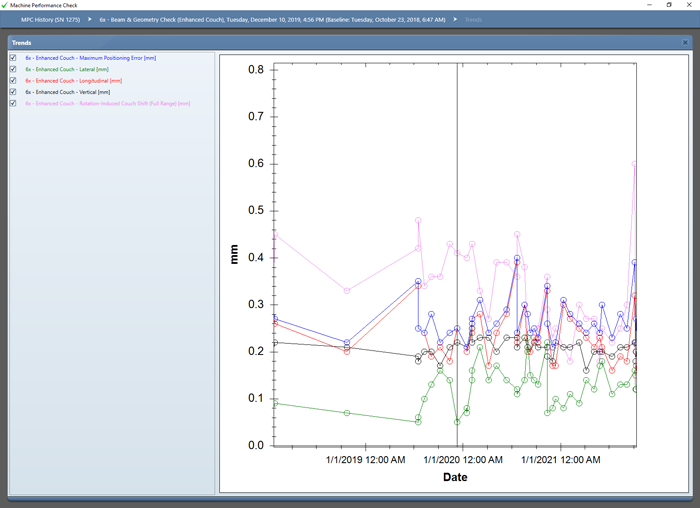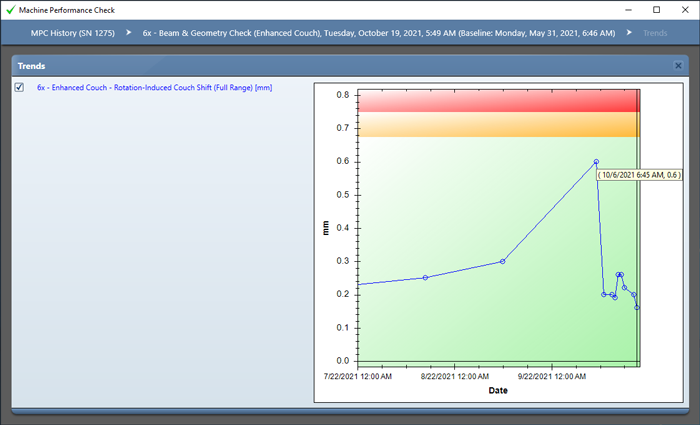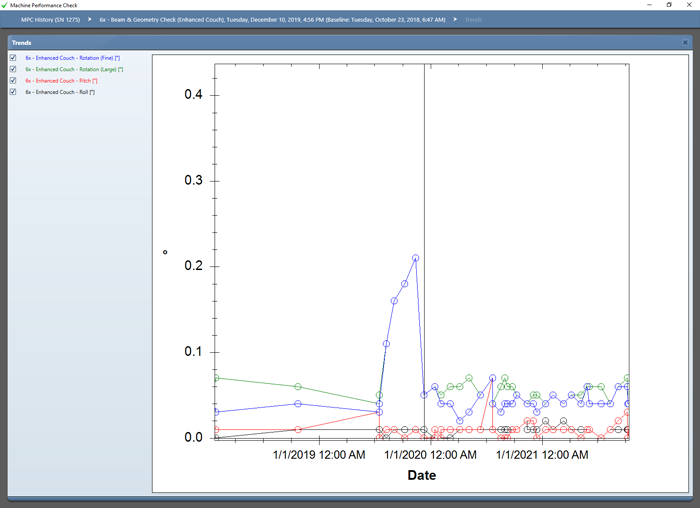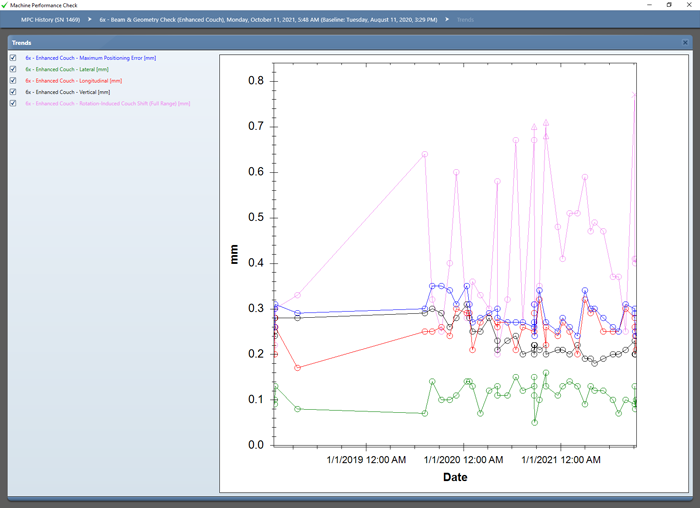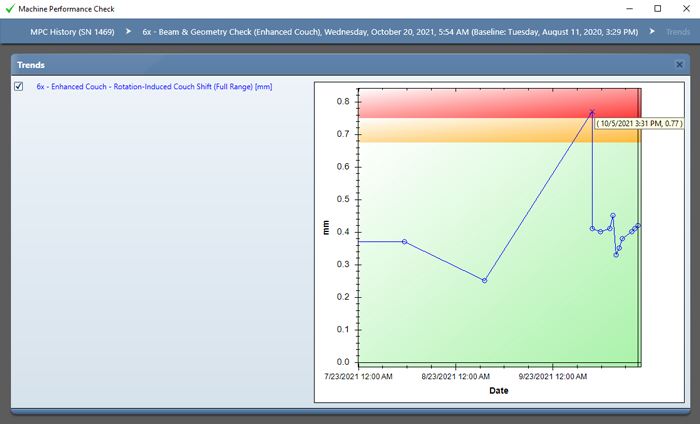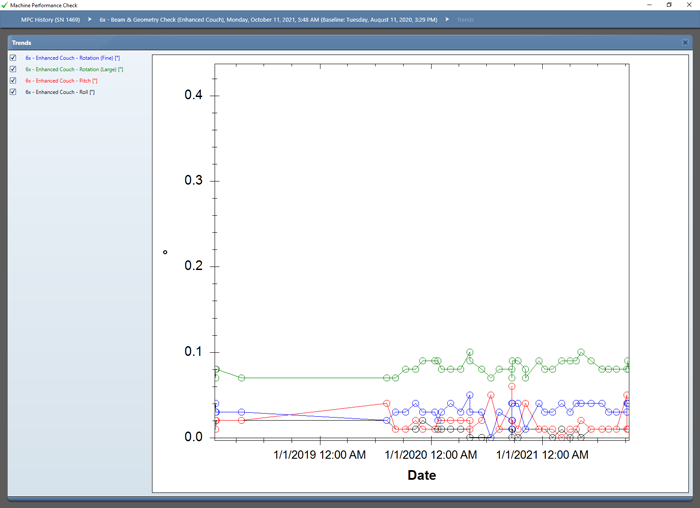TrueBeam Geometric Performance for HyperArc
Advanced treatment techniques such as HyperArc™, which are capable of delivering high doses to a large number of targets very precisely and in a very short time can only be performed on high precision radiotherapy machines. The TrueBeam is the ideal platform for such techniques, because it was designed for them.
In this article, we want to focus on one aspect of machine performance which is important for accurate beam delivery in the context of HyperArc: the large rotations ("couch kicks") of the treatment couch.
One of the characteristics of HyperArc is the use of noncoplanar half arcs, as described previously.
This is in contrast to typical RapidArc VMAT plans, where couch kicks generally play a minor role and where noncoplanar arcs, if they are desired, have to be set up manually in the Eclipse Treatment Planning System. In this sense, HyperArc is more similar to old-fashioned stereotactic treatments ("linac radiosurgery") which uses cones and multiple noncoplanar arcs focused on the target.
When using large couch kicks, one has to make sure that these rotations do not induce additional shifts of the patient.
So what are the relevant performance characteristics and how can they be monitored by the user in the context of quality assurance?
The MPC Enhanced Couch Geometry Check
We covered Varian's Machine Performance Check (MPC) several times (see for instance the article about MPC basics), but never showed a picture1 of the phantom:
The phantom is a white hollow delrin cylinder with 16 embedded tungsten bearing balls (BBs) and a black baseplate on one end. In MPC mode2, the phantom rests on a mounting bracket which is attached to the couchtop (three defined points, red arrows) at a certain indexing position (blue arrows). With the help of the grooves on the cylinder, the phantom is roughly3 aligned with the lasers (= at isocenter) and the MPC check is started on the TrueBeam console.
MPC Version 2.7 offers a new check which has been added due to HyperArc: the Enhanced Couch Geometry Check (ECGC). In this check, the couch axes have wider travel and rotational ranges than in the standard geometry check. Most importantly, images are acquired at the HyperArc couch angles (±45°, ±90°).
The ECGC performance values are reported in a separate section (red frame) of the MPC results:
The details of the performance values will be described next.
Overview of Performance Values
MPC measures the positioning accuracy of the different couch axes with respect to a reference position. All
available couch axes are moved to various positions and the actual travel range of the couch axes is determined.
For the standard couch check, the evaluations are each made on a single position and reported as signed
offsets.
When choosing the ECGC, an extended set of positions gets tested. As opposed to the standard couch measurements, the offset of every axis is evaluated on multiple couch positions (as reported in the following table1). As a consequence, the offsets for each axis are reported as maximum absolute offsets.
With these test positions, the following performance values are calculated:
- Maximum Positioning Error: Describes the positioning accuracy considering all linear axes on any of the measured positions 1 to 5.
- Lateral/Longitudinal/Vertical: Describes the positioning accuracy of the lateral/longitudinal/vertical couch axis on any of the measured positions 1 to 5.
- Rotation (Fine): Describes the positioning accuracy of the patient support angle for fine patient positioning, evaluated on positions 6 and 7.
- Rotation (Large): Describes the positioning accuracy of the patient support angle over the full range, evaluated on positions 6 to 11.
- Pitch/Roll: Describes the positioning accuracy of the patient support pitch and roll angles on positions 6 and 7. The pitch and roll axes of the couch are measured in isocentric coordinates. This means that the mechanical travel ranges of the other axes will be different from the above values. The pitch and roll axes are rotated to their mechanical maximum of ± 3°.
- Rotation-induced Couch Shift (Full Range): The center of rotation of the couch is determined through a motion on all available rotational axes and differs from the location of the treatment isocenter. The rotation-induced couch shift is the offset of this center of rotation from the treatment isocenter. This is evaluated on positions 6 to 11.
Results
On TB1275, the first ECGC was scheduled on Jan 18, 2018. TB1469 started the next day. First, the tests were done sporadically. In July 2019, we adopted the minimum frequency of one ECGC per month.
The unfiltered results of all ECGCs ever performed on our TrueBeams are displayed in the following graphs. The linear axes have deviations in [mm], the rotational axes in [°].
TB1275 - Linear Axes:
All deviations are below thresholds. The largest translational deviation occurred on Oct 6, 2021 for the rotation-induced couch shift (0.60 mm, line in magenta). After performing IsoCal, the values were back to normal (0.20 mm):
TB1275 - Rotational Axes:
All deviations are below thresholds. The "peak" in couch fine rotation (threshold: ± 0.30°) cannot be explained in retrospect.
TB1469 - Linear Axes:
The measured deviations on TB1469 for the rotation-induced couch shift are generally higher than on the other machine, but they are not constant. The values rather oscillate between normal (0.20 - 0.30 mm) and elevated (0.60 - 0.70 mm) values. On Oct. 5, the value (0.77 mm) was slightly over the threshold (0.75 mm), which made the MPC fail. However, repeating the check immediately gave normal results:
TB1469 - Rotational Axes:
All deviations are well below thresholds.
Discussion
If the MPC results of the Enhanced Couch Geometry Check are inside the defined tolerances, one can be confident that effects related to couch rotations do not compromise HyperArc isocenter4 accuracy.
The small excess of Oct. 6 is a clear reminder that system components can drift, for various reasons. It therefore makes sense to perform certain recalibrations on a regular basis. IsoCal, which calibrates the imaging isocenters, is a good starting point. One should keep in mind that MPC performs its calculations on the basis of kV and MV images, and if the imaging isocenter is wrong, the MPC results will be wrong as well. IsoCal can be completed within a few minutes, and is repeated monthly as part of normal linac QA.
The translational limits (0.75 mm for the rotation-induced couch shift, 0.70 mm for all other translations) were only exceeded once on TB1469, and never on TB1275. Rotational values were always within tolerances.
In principle, the ECGC can be scheduled every morning as default, instead of the standard Geometry Check. However, since it takes longer to complete, another valid QA approach is to perform the ECGC only on days when HyperArc patients are scheduled as an Ad-hoc check, and the standard geometry check on all other days. This is what we do, since our HyperArc frequency is still low.
Notes
1 Taken from Machine Performance Check Reference Guide, Varian Medical Systems Inc., P1016339-004-D, July 2018.
2 In IsoCal mode, the phantom hangs on the front edge of the treatment couch, without the bracket.
3 Minor misalignments when setting up the phantom will not affect the MPC results.
4 The standard geometry check determines isocenter size on a daily basis. Measured values are very constant at about 0.32 mm on TB1275 and about 0.26 mm on TB1469.
